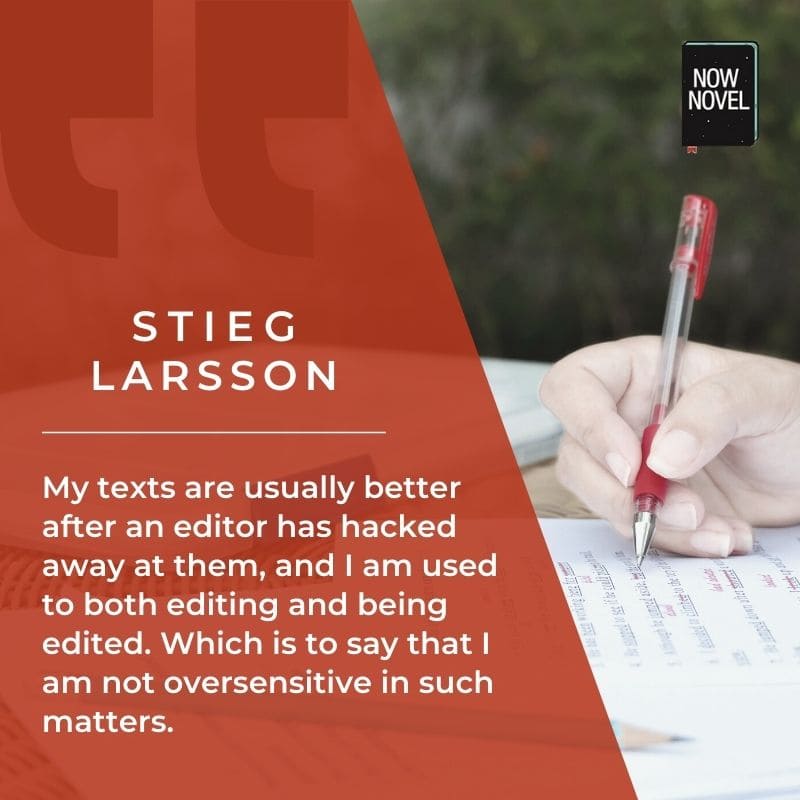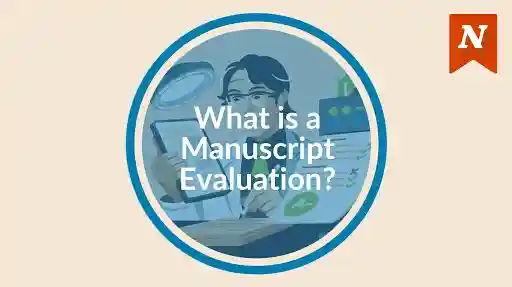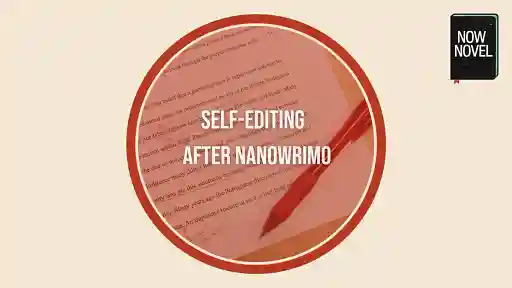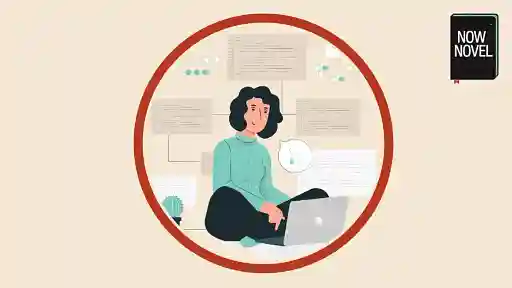Editing fiction provides many learning opportunities. Guiding authors and helping them align what they're saying to what they want to say takes a precise set of skills, but also delivers expansive writing insights with every completed project. Read 9 insights from working as a fiction editor (plus take-home ideas for self-editing your work):
Novel editing learnings from critiques and MS evaluations:
- Overwrite now, whittle down later
- Decide essential points of view
- Look for character inconsistencies
- Watch narrative structure at multiple levels
- Be conscious of contrivance
- Keep the puppeteer concealed
- Invite your reader's imagination
- Avoid early, easy, unearned resolution
- Know your fiction editing intent
Let's explore these ideas further, drawing on examples from editing fiction (discussed in broad terms, to preserve client confidentiality):
1. Overwrite now, whittle down later
A major challenge of creative process is that we want our progress itself to look good. We want scenes and chapters to emerge as publishable in syntax, line, image and idea.
Yet writing drafts is in truth a messier process.
When you give yourself license to write freely - overwrite even - this makes fiction editing a much freer process than if every word and phrase is already set and has been polished several times to a point of rigidity along the way.
Example: Overwriting to find the right line
A Now Novel editing client had written a fascinating historical saga in which the main character is ultimately executed.
Towards the end of novel, the author had written a paragraph of stunning prose describing a vision the protagonist has just before their execution. The vision connected the character's entire history and their one great passion to their final moments.
The author had continued past this point, including scenes from the afterlife, unaware they had already written a powerful and profound final paragraph which unified the book's imagery and symbolism into a goosebumps-creating moment.
By leading the reader up until the moment the axe was about to fall and no further, the author could, in a sense, transcend recorded history with something more beautiful and moving that fit the redemptive tone of the work.
In this example, writing beyond the manuscript's most natural seeming ending point made it easy to find and bring out what was already meaningful, affecting and completely worth foregrounding in the work.
2. Decide essential points of view
In editing fiction and coaching writers, one often finds that the author has become attached to one or more inessential viewpoint characters.
When is a POV character inessential, you might ask? This is when a character (for example):
- Dilutes or muddies the focus of the story's plot and/or themes
- Saps away narrative suspense and/or tension, adding irrelevant-seeming story segments
- 'Hijacks' the story so that who exactly the important POV characters are becomes unclear
This is where it helps to keep a summary of each character's key goals, motivations, and inner conflicts and any ways they change over the course of your story.
When you introduce a new POV character, how do they connect to your existing characters' goals, motivations and conflicts? If there is no connection, what are they contributing to the story's flow and focus?

3. Look for character inconsistencies
Novel editing, developmental editing in particular, provides an opportunity to analyze character arcs at a scene level and across the book entirely.
The latter is a common avenue for slip-ups.
When you're focused on the detailed, scenic view, you might not notice that your character was a battle-axe in the first three chapters but was (unexpectedly, confusingly) sweetness and light in chapter 10. Here is more insight into editing for these inconsistences, while looking at macro and micro editing.
Create a checklist for character inconsistencies
If you are self-editing your manuscript, create a checklist for characters:
- Are characters' names and nicknames consistent (and any changes in naming explained?)
- Are characters' personalities stable or, if their personalities change, are these changes motivated by their psychology, beliefs or experiences (character development)?
- Do characters ever act 'out of character', and if so, is the reason shown well enough for the reader to believe their behavior in context?
The list could go on.
One of the advantages of working with a good editor for an evaluation or developmental edit is they will scrutinize each character for these kinds of inconsistencies (the kind that don't make sense and may frustrate readers).

Bring your publishing dreams to life
The world's best editors, designers, and marketers are on Reedsy. Come meet them.
4. Watch narrative structure at multiple levels
Narrative structure is not something one necessarily thinks about while drafting (unless you are an absolute plotter by nature). However it's an essential aspect to think about when you edit or revise your story.
Why? Because when some scenes and chapters drag on, you run a strong chance of losing your reader.
When you're competing with other books, Netflix, and many others forms of entertainment, it pays to keep focus tight.
Editing for narrative structure example: Sticking to the letter
Often as writers we get attached to a line, an image, an idea. For example, 'this secondary character will write letters to my protagonist'.
In one story, an author had an intriguing secondary character write lengthy letters to their protagonist.
A structural narrative issue was that these regular updates, though full of detail, voice and images that were engaging, did not advance the main story in any obvious or immediate way.
Because the reader would most likely experience the secondary character as a walk-on, due to their brief appearance, the reader would likely not 'have a horse' on their particular 'race'. There was no suspense to the relationship or uncertainty to its possible direction.
The effect was that the letters, despite being well-written and expressive in themselves, weakened the broader pacing and rate of new information revealed, distracting from the more pressing central mystery of the story.
The recommendation in such instances may be to cut what is 'good writing' at a line level, but not necessarily at a compositional or holistic one.
5. Be conscious of contrivance
When you search 'novel editing', many articles are about how to self-edit your writing.
There are pros to self-editing, cost being the main benefit (having a free versus paid revision process). However, pitfalls to editing your own work include missing subtler nuances such as storylines that read forced or contrived.
MacGuffins (objects or events that you include in a story solely to give another incident or event a cause) can work. Yet they work best when intentional and not the result of either laziness or trying to dig oneself out of a plot hole.
It's wise to know what images or plot points may seem particularly 'ready-made' to readers. This sense of awareness develops with reading widely within your genre (and without).
Examples of common contrived plot lines
- The protagonist is incredibly lucky, to the point that no danger feels like a true threat
- Romantic leads are brought together because the genre or story structure dictates it (for example, the tradition of Shakespeare's comedies ending in rushed marriages - a contrivance of his time that is satirised hilariously in the sitcom based on his life and work, Upstart Crow)
- Any story development that feels unearned by what preceded it, making it less believable
Indie author EB Dawson puts this last point well:
When people say something is contrived, it usually means that particular element of the story was forced. To me it means the author got lazy. Example: two main characters have been legitimately bickering the whole story and in the last chapter they fall in love. Even if the reader secretly wanted them to get together, if you as an author don’t put the time in to make that match believable, even your most loyal readers will cry foul.
EB Dawson, 'What Makes an Element in Your Story “Contrived” and How to Avoid It', March 30 2017
6. Keep the puppeteer concealed
One of the biggest marks of a beginning writer is a tendency to reveal the author's hand.
For example, a self-consciously literary style. Tears are described using 101 synonyms for water and something leaking down a character's face.
There's no shame in simply saying 'he cried'; in remembering KISS, the age-old acronym ('Keep it Simple, Stupid').
One of the ways you can edit to pull the curtain over any string-pulling is to show more, tell less. Which is not to say, 'show, don't tell', like a decree. But rather, be judicious about when you choose to show, and when you choose to tell (this is something an editor aware of the nuances will help with).

7. Invite your reader's imagination
Novel editing involves, in part, thinking as a reader. Not only the kind of reader you are yourself, but being able to imagine a hypothetical reader who may bring radically different interpretation and personal associations to the work.
One thing to pay attention to when self-editing or working with an editor is the idea of 'invitation'.
Do you invite your reader to become active in making meaning? Or do you tell them what every little detail means, how to hear the exact rustle of the wind through dry leaves, with no room left to make their own kind of music?
Example of inviting the reader: (Not) telling readers what they already know
Many editors have their personal bugbears. A good editor will keep these in mind, and own any insight or analysis that stems from a more subjective/biased perspective.
A personal bugbear is unnecessary onomatopoeia (sound words). For example:
"Gnnghh," he grunted, as he lifted the heavy suitcase.
Your reader will likely have heard someone make a sound like this. Saying 'He grunted as he lifted the heavy suitcase...' invites your reader to supply their own sound folio.
Look for places where you could be asking your reader's imagination to do a little more heavy lifting of its own.
8. Avoid early, easy, unearned resolution
In editing fiction, it's important to focus on many aspects. Not only style and SPAG but also dramatic structure, cause and effect, what feels earned by the sequence of events and thus believable.
Time and again, good stories deliver the satisfaction of well-earned resolutions. All broken fragments of story conflict are gone, not because they disappeared in a magical 'poof', but because the author actually swept the house (to use an analogy).
9. Know your fiction editing intent
Self-editing your work is inadvisable. Many a time we miss our own errors. If it's your only editing option, make it systematic. Consider doing separate passes through a scene for different elements:
- Pace and narrative structure
- Tension and suspense
- Character development
- Description
- Showing vs telling
- SPAG, style and formatting
Because our manuscript evaluation template is divided into 14 sections, each requiring substantial, actionable feedback, this structure helps to ensure that we pay attention to the multiple elements of story that determine whether or not writing makes a memorable impact.
Being an editor, one knows that the first and ultimate purpose is to help the text and story to shine, maximizing (and bringing to the surface) their inherent potential.
Structuring your editing process and knowing your intent (whether it is developmental, or just to catch SPAG and style errors, i.e. copy-editing) will help you keep your revision process focused.
Get a free sample edit when you submit a no-obligation quote request for Now Novel's fiction editing services, and weekly editor critiques with any Now Novel plan.









There’s so much to take in, I’ll be immersed in these points for a while. They’re all absolutely what I need. Thank you, Jordan.
Heather Tyler - Over 3 years ago
Hi Heather, thank you for your kind feedback. It's a pleasure. Thanks for reading our blog and sharing your thoughts.
Jordan - Over 3 years ago
I overwrite, add a scene here and there when I feel it may be important. For instance, I wrote a separate chapter to show how my main character first meets the girl he fell in love with. Since he does lose her in an unfortunate accident, I want to show why his actions are what they are and lead to. I also have a separate chapter of his twin brother, introducing him. My issues are trying to decide when and where they’ll fit in the novel. Thanks for these tips! I save my overwrites until I have to chop the up.
Debra Estrada - Over 2 years ago
Hi Debra, thank you for sharing your process. That's a great idea, to draft the scenes that inform your characters' present world and choices, even if you don't intend to include them all in the timeline of where the story picks up. It sounds a good process. Thanks for reading our blog!
Jordan - Over 2 years ago